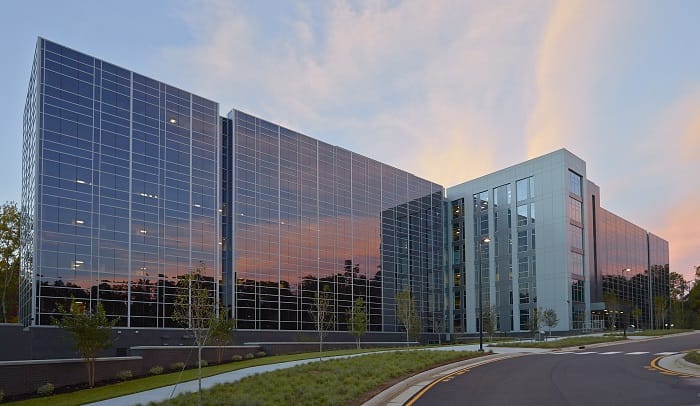Corporate responsibility SAS essay
Corporate strategy is shaped, first of all, by corporate mission, vision, values and goals. The presence of clearly defined values and goals reinforces the strategy and shapes the corporate environment. Furthermore, job values and goals have a strong impact on job motivation, satisfaction and in general on job attitude of employees; the above-mentioned factors, in their turn, have a strong impact on turnover, performance and business efficiency. The purpose of this paper is to identify key goals and values of SAS, to research the attitude of employees to working in SAS and to analyze the effect of goals and values of SAS on job satisfaction and motivation using the Job Characteristics model.
Company background
SAS Institute Inc. is a software company founded in 1976 (SAS, 2014a). The company is headquartered in Cary, North Carolina. Initially, the acronym SAS stood for “statistical analysis system” – the software which initiated the creation of the corporation (SAS, 2014a). Currently SAS software is one of the leading packages used by large companies to collect, store, report and analyze business data and to make business decisions. It is notable that 91% of top 100 companies listed in Fortune 500 use SAS to analyze business information and to enhance their decision-making (SAS, 2014a). Overall, SAS software is used in more than 70,000 sites in 136 countries (SAS, 2014a).
SAS values and goals
SAS defines its mission in the following way: “SAS delivers proven solutions that drive innovation and improve performance” (SAS, 2014a). The key values listed by SAS on its website are: approachable, customer-driven, swift and agile, innovative and trustworthy. SAS currently has 13,677 employees which are located worldwide: in the United States, in Canada, Latin America, Asia Pacific, Europe, Africa and Middle East. The values of SAS are also demonstrated by the corporate responsibility section of its website: the company emphasizes the importance of ethical management and governance, invests into education philanthropy and environmental programs. Furthermore, SAS has a “world-renowned culture based on trust, flexibility and values” (SAS, 2014b). In terms of employee culture, SAS provides numerous workplace options and features for employees, provides workplace awards, displays artworks in the offices, invests into employees and their education (SAS, 2014b).
Working at SAS
SAS was rated by Fortune as the second best company to work for after Google. The company has been on the list of best employees for 17 years, and in 2013 SAS also was also rated as second best employer. Voluntary turnover at SAS is only 2%, while job growth is 3.6% per year. The company offers onsite childcare, provides access to onsite fitness centers and sponsors gym memberships of employees (Fortune, 2014). Although SAS does not pay for 100% of healthcare costs, the company has a decent range of healthcare options offered in its onsite health center. There are numerous options for having a good work-life balance such as job sharing and compressed work weeks (Fortune, 2014). Employees receive training and are highly motivated. 95% of SAS employees look forward to the new working day and 97% of them are proud to be working at SAS (Great Rated, 2014).
Job Characteristics Model
High motivation and positive attitude to work among SAS employees can be explained using Job Characteristics Model. Job Characteristics Model consists of five key elements of job design which have a direct impact on motivation and performance: skill variety, task identity, task significance, autonomy and feedback (Hellriegel & Slocum, 2007). The first three factors contribute to elevated work meaningfulness, autonomy provides for increased work responsibility, the presence of feedback creates the knowledge about job results and performance. Hence, Job Characteristics Model relies on Herzberg’s model of motivation and outlines the factors which determine the presence of high motivation, satisfaction, performance and low turnover (Hellriegel & Slocum, 2007).
In the case of SAS, job variety, task identity and task significance are high because of two core values – “innovative” and “swift and agile”. IT industry as such consists of complex and varied tasks, and SAS is not an exception. Cutting-edge research and development require various skills, and Agile approach used in IT industry allows to achieve high task identity. Task significance in SAS is essentially high because of the company’s market leadership and wide use of SAS in top world’s corporations. The employees are aware that their product will be delivered to a variety of people and will have a direct impact on strategic business decisions, so the degree of task significance is high.
The levels of task autonomy at SAS might be varied, but employees at SAS receive regular feedback and are awarded for their achievements. SAS characterizes its workplaces as such that “offer unprecedented challenges, opportunities and support for employees” (SAS, 2014b). Therefore, according to the Job Characteristics Model, SAS effectively reinforces at least four out of five factors that have a positive influence on job satisfaction, motivation and performance.
Conclusion
SAS goals, such as driving innovation and improving performance worldwide, as well as corporate values such as agility, swiftness, innovation, approachability and attention to customer needs have a positive impact on at least four out of five Job Satisfaction Model factors – skill variety, task identity, task significance and feedback. This is a model which should be adopted by the majority of businesses due to its flexibility and time-proven efficiency. The analysis of SAS using Job Satisfaction Model shows that employees in this company should be highly motivated and should have low turnover; these conclusions are proven by low turnover rates in SAS (voluntary turnover is about 2%) (Fortune, 2014) and high level of satisfaction (4 out of 5) (Great Rated, 2014). Therefore, SAS model or its elements could be recommended for adoption by other businesses.
Do you like this essay?
Our writers can write a paper like this for you!



